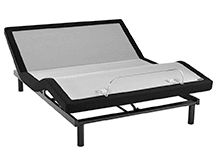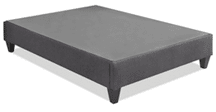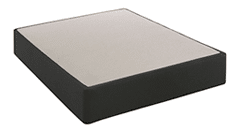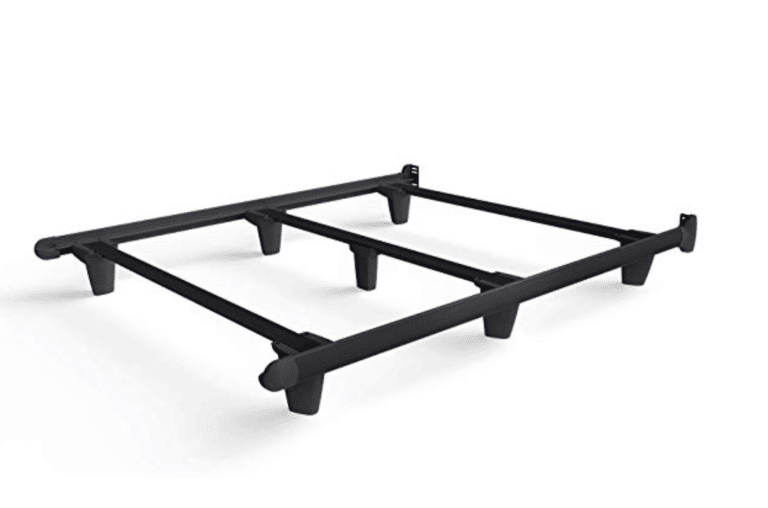
Sleep is among the most critical beacons of health, largely determining our ability to function mentally and physically. By sleeping roughly 8 hours a night, we spend at least a third of our lifespan sleeping and typically on our own personal mattresses. This is why a high-quality mattress is among the most important investments we can make. Learn when you might need a new mattress below.
Mattresses need durable materials, careful construction, personalized features, and regular maintenance. Mattresses aren’t meant to last forever, though. A mattress will show noticeable signs of wear through the years and eventually signal when they need to be replaced.
A high-quality mattress will likely last about 10 years, and a luxury mattress will last up to 20 years. Shoppers can typically gauge a mattress’s lifespan while it is still in the store based on its materials, maintenance needs, and those who will sleep on it. While these characteristics do not entirely guarantee the mattress’s long-term durability, they will help predict.
Mattress materials vary by style and manufacturer. The majority of mattresses are made of traditional innerspring, foam, latex, or some combination thereof.
The innerspring mattresses tend to wear sooner. Most start sagging and develop body impressions within the first five years of use.
Foam mattresses, like memory or polyfoam, are more dependable so will likely last eight to 10 years. Latex mattresses offer the most prolonged use, typically holding their shape 15 or 20 years. Hybrid mattresses combine different styles, so their lifespan can vary.

The mattress materials determine the up-front price of the bed. Innerspring is typically the cheapest, and latex the most expensive. However, more inexpensive beds will need to be replaced pretty frequently, or they will cause poor sleep and pain. This means that across a 20-year timespan, most sleepers will spend about the same amount on their mattress (or mattresses). Many people prefer investing in a higher-quality bed upfront to avoid shopping every five to seven years.
Mattresses must adapt to the sleepers’ bodies, softly cradling some areas and firmly supporting others. Things like joints, the spine, and the head. These key points in the body lie differently for each sleeper, though. A variety of mattress types are availalbe to ensure a mattress matches each sleeper’s unique body shape and size; certain mattresses are designed for larger sleepers and others are designed for smaller ones. It is essential to find the right mattress for your body.
Your body’s height and weight are both important to consider. Those who sleep with partners should also consider their partner’s body size. Heavier sleepers will likely see their mattress sag earlier than lighter-weight sleepers. Specific mattress designs are better at tackling this. A latex or latex hybrid mattress is better for heavier sleepers or those sharing a bed with partners, children, or pets. Visit the team at Mattress World Northwest for help addressing your unique size and weight needs.
A mattress will last longer with simple, routine maintenance. Sometimes, a quick rotation every few months is all it needs. Fresh sheets and mattress pads also keep a mattress clean and protect it against excess hair, skin, dust, etc., from gathering in the bed. Follow the mattress manufacturer’s maintenance suggestions.
It is easy to notice when a mattress is nearing the end of its lifespan. While a mattress can last five to 20 years, depending on materials and maintenance, it is good to pay close attention to the bed throughout the years of use.
A mattress will begin developing physical problems as it nears the end of its lifespan. These will be among the most noticeable signs that it is time to upgrade. Look for things like holes, frayed edges, and stains. While these may not impact sleep quality, they are early aging signs.
Noise can also signify that a bed is too old. This is especially typical for innerspring mattresses as springs lose their buoyancy. When a bed begins creaking and popping at night, and it is not because of the frame, start shopping.
A mattress may also sag, have lumps, and develop body impressions in certain areas. This will impact sleep quality. If there are significant physical issues like this, it is time for a new bed.

Mattresses trap hair, skin, dust, mold, bacteria, and other allergens through the years, especially when sleeping with pets. Certain mattress materials like foam do this more than others. It can be hard to notice this, though, especially if you already struggle with allergies when you aren’t sleeping. For those who regularly struggle with allergies, talk to a Mattress World Northwest specialist about what bed alleviates sinus trouble.
Using a mattress cover and high-quality sheets during the mattress’s lifespan will help slow the buildup of bed allergens. Your bed should not keep you from breathing, so if you notice issues at night, think about replacing your mattress.

A mattress is a critical investment. You will see a drastic lifestyle improvement when sleeping on a bed that is newer, higher quality, and personalized to your sleeping needs. When you remove issues like allergies, pain, and sleep interruptions, your energy levels, brain function, mood, and overall health all improve.
Instead of buying a cheaper bed, we recommend investing in a high-quality mattress. The investment will be long-lasting and pay off for years to come, both financially, physically, and mentally. Visit Mattress World Northwest to learn what bed is best suited for you and your budget. We will also detail our unique specials, warranties, and delivery services. Shop today for a better tonight!
While you can't go wrong with any of our mattresses, here are a few factors you'll want to consider before making a purchase: your sleep position (and if you have a partner, theirs as well), the size of the space, and a price point. If you have any questions, rest easy knowing that our team is happy to help you find that perfect fit.
| Size | Dimensions |
|---|---|
| Twin | 38″ wide x 75″ long x 9.25″ tall |
| Twin XL | 38″ wide x 80″ long x 9.25″ tall |
| Full | 54″ wide x 75″ long x 9.25″ tall |
| Queen | 60″ wide x 80″ long x 9.25″ tall |
| King | 76″ wide x 80″ long x 9.25″ tall |
| Cal King | 72″ wide x 84″ long x 9.25″ tall |
| Split King (2pk) | 38″ wide x 80″ long x 9.25″ tall |
Mattress World Northwest makes it easy to choose the right foundation for your space and lifestyle.



Reliable support for your boxspring and mattress.
